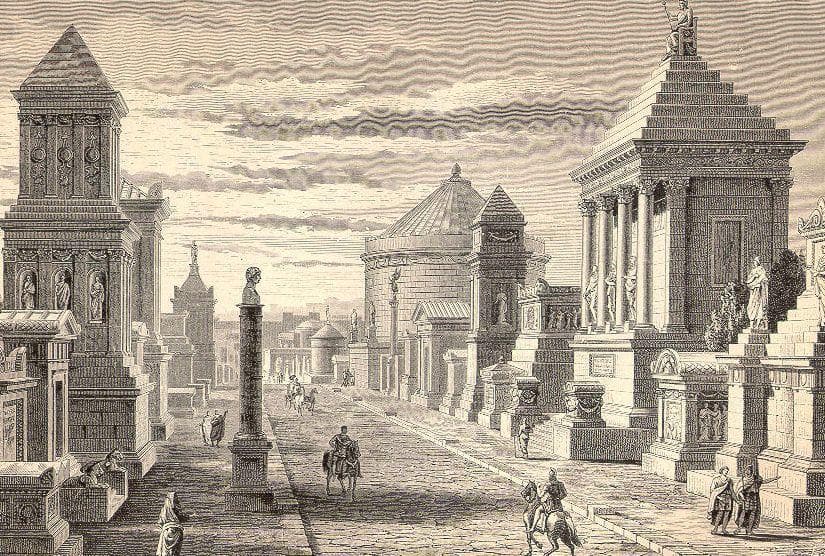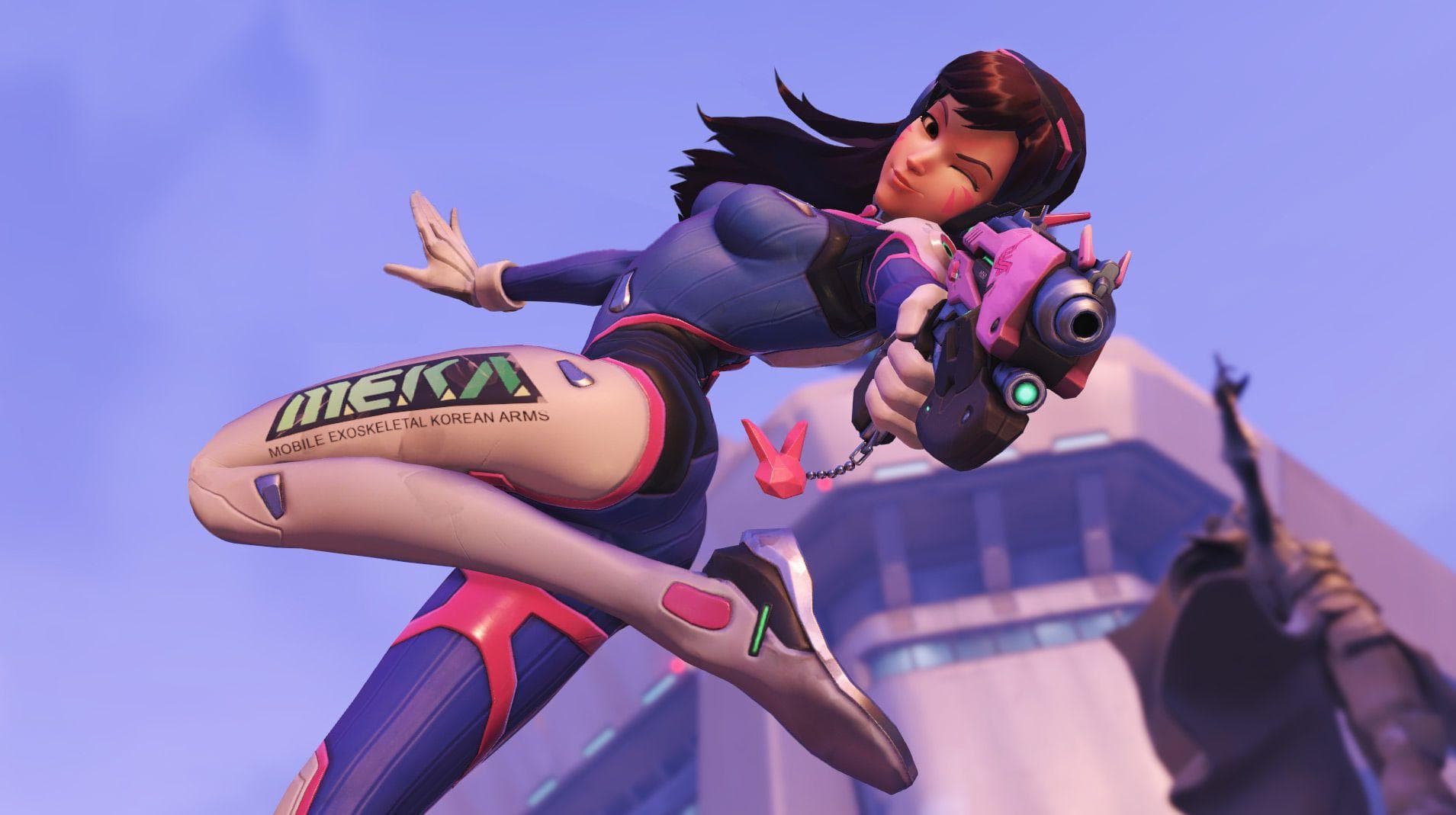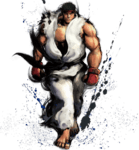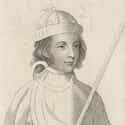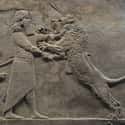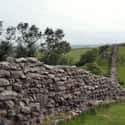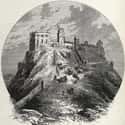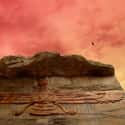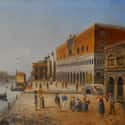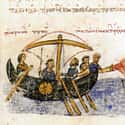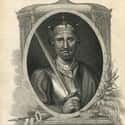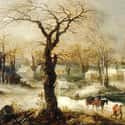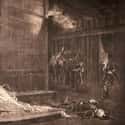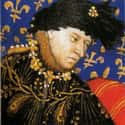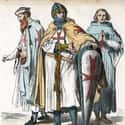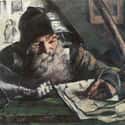-
(#1) Wars of the Roses
- Military Conflict
The A Song of Ice and Fire novels that inspired Game of Thrones are loosely influenced by an important real-world conflict: the Wars of the Roses. That period of civil unrest spanned three decades in the 15th century, and it's easy to see the connection to George R.R. Martin’s work.
During the conflict, two rival royal families, the Yorks and Lancasters, feuded over the throne of England. The parallel to the conflict between the Starks and Lannisters over the Iron Throne of Westeros is rather obvious, but Martin is an author who does his homework, so the similarities run much deeper than just the names. Mad kings, heirs being spirited away, and alliance-sealing marriages are all plot points in both the Game of Thrones and its real-world counterpart.
Martin has openly discussed how he took inspiration from well-known texts on the historical subject, telling The Guardian:
My model for this was the four-volume history of the Plantagenets that Thomas B. Costain wrote in the '50s. It’s old‑fashioned history: he’s not interested in analyzing socioeconomic trends or cultural shifts so much as... the plots and the betrayals, all the juicy stuff. Costain did a wonderful job on the Plantagenets so I tried to do that for the Targaryens.
-
(#2) Joffrey Baratheon Echoes Edward Of Lancaster
Many characters in Game of Thrones are inspired by historical figures, but the entire character arc of Joffrey Baratheon appears to be based almost entirely on the life of Edward of Lancaster. The English prince lived during the 15th century during the infamous War of the Roses, and the similarities between the two are impossible to ignore.
Edward was born the son of King Henry VI and Queen Margaret of Anjou, and like Joffrey, he was rumored to be the result of an illicit affair by the queen. After being driven into exile with his mother thanks to the outbreak of fighting, young Edward developed a downright Joffrey-like disposition where he became obsessed with removing people's heads and waging vicious conflicts.
Edward of Lancaster also met his end while still a teenager, just like Joffrey, though his demise came via the sword.
-
(#3) Ashurbanipal
- Author
Ramsay Bolton’s favorite method of torment is a Bolton family tradition and one of the most gruesome details in all of Game of Thrones. Flaying and skinning one’s enemies seems like something invented for a gritty fantasy series, but it happened at several points throughout history, including in the court of the Assyrian king Ashurbanipal.
After reconquering a city that had tried to leave his empire, Ashurbanipal reportedly asked for a pillar to be built at the city gate. Then, he had the rebel leaders flayed and used their skins to wallpaper the pillar as a powerful testament to his wrath. For good measure, Ashurbanipal had a few cadavers impaled and put on display, demonstrating true Ramsay-esque sadism.
-
(#4) The Wall Has An Ancient Roman Counterpart In Hadrian’s Wall
The most obvious historical parallel in A Song of Ice and Fire is also the one that inspired the entire series. While the Romans didn’t have the technology to erect a towering wall of ice like the one along the northern border of Westeros, they did build Hadrian’s Wall across 73 miles of northern Britain.
Hadrian’s Wall was intended to keep out those the Romans saw as barbarians - Picts, in this case, instead of Wildlings. Just as the Wall marks the northernmost reach of Westerosi authority, Hadrian’s Wall was also seen as a marker of the Roman Empire’s upper limit. There was no analog to the Night’s Watch tasked with manning Hadrian’s Wall, though; it was just staffed by the Roman legions.
As George R.R. Martin tells it, his first inklings of the story that would become A Song of Ice and Fire began with a visit to Hadrian’s Wall:
The Wall predates anything else. I can trace back the inspiration for that to 1981. I was in England visiting a friend, and as we approached the border of England and Scotland, we stopped to see Hadrian’s Wall. I stood up there and I tried to imagine what it was like to be a Roman legionary, standing on this wall, looking at these distant hills. It was a very profound feeling. For the Romans at that time, this was the end of civilization; it was the end of the world. We know that there were Scots beyond the hills, but they didn’t know that. It could have been any kind of monster. It was the sense of this barrier against dark forces - it planted something in me. But when you write fantasy, everything is bigger and more colorful, so I took the Wall and made it three times as long and 700 feet high, and made it out of ice.
-
(#5) George R.R. Martin Based The Red Wedding On Two Grisly Real-Life Events
The Red Wedding is one of the most shocking moments in all of Game of Thrones, but fans who know their Scottish lore may have seen the slaying of Catelyn and Robb Stark coming. There are actually two direct inspirations for the Red Wedding to be found in European history.
While the Glencoe Massacre shares the same scale of carnage as the Red Wedding, the finer details of 1440’s Black Dinner more closely mirror George R.R. Martin’s writing. As he told Entertainment Weekly:
The Red Wedding is based on a couple real events from Scottish history. One was a case called The Black Dinner. The king of Scotland was fighting the Black Douglas clan. He reached out to make peace. He offered the young Earl of Douglas safe passage. He came to Edinburgh Castle and had a great feast. Then at the end of the feast, [the king's men] started pounding on a single drum. They brought out a covered plate and put it in front of the Earl and revealed it was the head of a black boar - [a dark omen]. And as soon as he saw it, he knew what it meant... The larger instance was the Glencoe Massacre. Clan MacDonald stayed with the Campbell clan overnight and the laws of hospitality supposedly applied. But the Campbells arose and started butchering every MacDonald they could get their hands on. No matter how much I make up, there's stuff in history that's just as bad, or worse.
-
(#6) Zoroastrianism
- Religion
The faiths of Westeros are many, but none are as controversial as the worship of R’hllor practiced by Red Priests and Priestesses, like Melisandre. The tenets of the Lord of Light might read like something out of a fantasy series, but they borrow a lot from Zoroastrianism, one of the earliest monotheistic religions in human history.
Both faiths focus heavily on the importance of fire and an understanding of the universe as divided into binary terms. The Zoroastrians also have a hero-figure who is destined to take on the forces of evil in a climactic fight, but theirs is named Ahura Mazda instead of Azor Ahai, proving this isn't a complete copy-and-paste job.
-
(#7) The Braavosi Are Basically Venetians
The fictional city of Braavos may be located across the sea from Westeros, but it plays a major role in Game of Thrones. Most notably, it's where Arya learns the art of face-swapping and fighting. The infrastructure of Braavos is dominated by canals, which makes it pretty obviously inspired by the real-life city of Venice. But there’s more to the connection than waterways.
Like Venice, Braavos operates as an independent city-state. Whereas the politics of Braavos are dominated by the Iron Bank and the mysterious guild of the Faceless Men, Venice was ruled for centuries by a similarly nebulous group called the Council of Ten.
-
(#8) The Ironborn Are The Vikings Of Westeros
While the main conflict in Game of Thrones is based on the 15th-century conflicts of Europe, it isn’t tied to any particular time period. That allows George R.R. Martin to mix history up a little bit, bringing together historical concepts and figures that actually existed centuries apart. The Ironborn are a great example of this.
As a culture based entirely around reaping and pillaging, the Ironborn are clearly inspired by the Vikings, but the Norse sailed the seas hundreds of years before the Yorks and Lancasters began fighting. By bringing the vicious Greyjoys into conflict with the Starks and Lannisters, Martin gets to mash together historical empires that never had the chance to clash in real life.
-
(#9) The Battle Of Blackwater Bay Follows The Plot Of The Second Arab Siege Of Constantinople
The conflict at Blackwater Bay closes the second season of Game of Thrones and remains one of the most epic moments in the series. Some viewers might have felt the fiery action stretched the bounds of the show’s semi-medieval setting, but things actually went down a lot like the Second Arab Siege of Constantinople.
Both conflicts featured a naval strike against a city that sat on a bay, with Constantinople protected by the Golden Horn. The Turks didn’t have access to the fictional wildfire, but they did have Greek fire, an incendiary substance that was thrown at enemy ships with great success. The bay at Constantinople was also protected by a great chain, which is the same defense Tyrion Lannister uses to turn the tide against Stannis Baratheon's fleet.
-
(#10) William the Conqueror
- Notable Figure
Aegon the Conqueror united the Seven Kingdoms of Westeros generations before the events in Game of Thrones, and this bit of Westerosi history mirrors the real-life reign of William the Conqueror. The most notable difference between the two was William’s lack of dragons.
As the Duke of Normandy, William crossed the English channel and began a slow and steady conquest of England, similar to how Aegon arrived from Dragonstone to start conquering all of Westeros. Through militaristic might and the forging of alliances, William started a dynasty that lives on to this day - just like how Aegon’s reign eventually leads to the arrival of Daenerys Targaryen.
-
(#11) Little Ice Age
- Event
Aside from the dragons and army of White Walkers, one of the biggest elements that separates Game of Thrones from a true medieval setting is the wacky weather of Westeros. The seasons in the Seven Kingdoms don’t change on a yearly basis, but instead, slowly rotate through summers and winters that can last generations at a time. While that type of climate phenomena is clearly fantastical, the Little Ice Age is about as close as the real Earth ever came to a “Winter is Coming” moment.
The Little Ice Age, formally known as a climate interval, started in the 14th century and lasted for more than five centuries. During that time, temperatures declined in the Northern Hemisphere and glaciers expanded. Frequent famine was an unfortunate result for many living in the top half of the world during the Little Ice Age, something the people of Westeros have had to face in the past - and will perhaps have to face again in the future - of Game of Thrones.
-
(#12) Attila the Hun
- Politician
The historical image of Attila the Hun charging across the plains leading a horde of horsemen is a lot closer to Khal Drogo than it is Joffrey Baratheon. Still, Attila and Joffrey share one important life detail aside from their villainous persuasion: they both perished under mysterious circumstances at their own weddings.
Attila’s marriage to Ildico wasn’t his first, but it would be his last. When he was discovered the next morning, he had met his demise, suffocating on his own blood. Theories on his passing range from excess alcohol to burst blood vessels, but there are plenty who believe the great leader was slain. Unlike Joffrey's end, Attila’s passing remains a mystery.
-
(#13) Charles VI of France
- Notable Figure
In many ways, the conflict in Game of Thrones stems from the actions of the generation that preceded its main cast, and their troubles were largely caused by the Mad King, Aerys Targaryen. Aerys’s slaying of Rickard and Brandon Stark - and his subsequent demand for the heads of Ned Stark and Robert Baratheon - sparked Robert’s Rebellion, and his actions were the result of his slow descent into madness.
There have been many mad monarchs in history, but the one with the clearest correlation to Aerys seems to be King Charles VI, also known as Charles the Mad. Like Aerys, Charles began to slip into insanity and frequent bouts of aggression as a result of his increasing paranoia. Unlike the fictional Targaryen, the French king’s paranoia stemmed from a condition that caused him to think his entire body was made of glass.
-
(#14) Knights Templar
There’s no direct real-world equivalent to the Night’s Watch in terms of their role as guardians of a magical ice wall, but they do have some cultural brothers-in-arms in the Knights Templar. In fact, the parallels between the two orders are so numerous that the Templars likely served as a direct inspiration.
Like the Night's Watch, the Knights Templar took an oath of chastity and gave up all possessions and titles upon joining. Both orders recruited from all corners of society and promised absolution of sins, and both were led by elected commanders who led for life. Perhaps the most interesting parallel is that, like the Night's Watch in Westeros, the history and lore of the Knights Templar is so wrapped up in myth and legend that it’s difficult to fully separate fact from fiction.
-
(#15) Götz von Berlichingen
- Author
Despite the supernatural elements and occasional dips into full-on fantasy, George R.R. Martin does his best to faithfully represent the pseudo-medieval setting of Westeros. The golden prosthetic that Jaime Lannister receives after having his dominant hand lopped off might seem like a fanciful embellishment, but there’s a 16th-century precedent in the real world.
Götz von Berlichingen was a German mercenary fighting for the Duke of Bavaria in 1504 when a cannonball relieved him of his right hand. His eventual metal prosthetic wasn’t made of gold, but it did feature a crude hinge mechanism that allowed him to grip a sword. Later in life, he even upgraded to a newer version with greater articulation.
New Random Displays Display All By Ranking
About This Tool
When George RR Martin created a highly detailed fantasy medieval world, most of the content of "Game of Thrones" based on medieval European history. It is certain that Martin drew a lot of historical details from the "War of the Roses", which between the Lancaster family and the York family for the throne of England from 1455 to 1485 AD. They are the two descendants of the King Edward III of the Gorse dynasty.
There are many plots in "Game Of Thrones" that have real historical parallels in medieval times. The random tool lists 15 details about the historical events that are similar to "Game Of Thrones".
Our data comes from Ranker, If you want to participate in the ranking of items displayed on this page, please click here.

